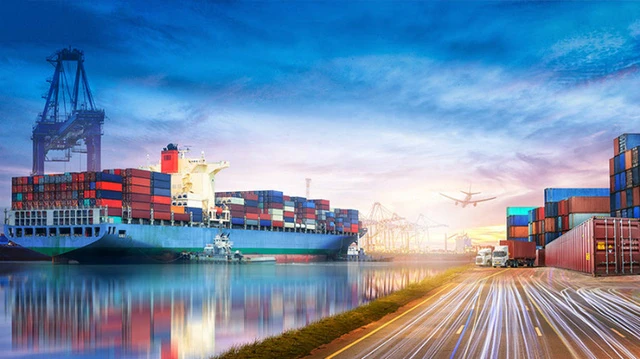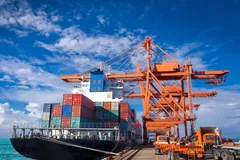
Record-Breaking Achievements in 2024
At the recent year-end conference reviewing the performance of 2024, Deputy Minister of Industry and Trade Phan Thị Thắng highlighted the stellar accomplishments of the trade sector. The total import-export turnover reached nearly $800 billion, up 15% from 2023, and exceeded the annual target by an impressive 2.5 times.
Exports alone accounted for $403 billion, representing a robust 13.6% year-on-year increase. This growth rate is among the highest in the ASEAN and broader Asia regions, underscoring Vietnam’s growing importance in global trade.
The seafood sector, which achieved $10 billion in exports in 2024 (a 12.7% increase), remains a key driver of Vietnam’s economy. Major contributors to this success include shrimp exports at $4 billion (up 16.7%), tuna at nearly $1 billion (up 17%), and pangasius at $2 billion (up 9.6%).
Vietnam is now the third-largest seafood exporter globally, trailing only China and Norway. Building on this momentum, the Vietnam Association of Seafood Exporters and Producers (VASEP) has set an ambitious target of $11 billion in seafood exports for 2025.
Vietnam’s fruit and vegetable exports shattered records in 2024, reaching $7.2 billion—a remarkable 27% growth from the previous year. Durian alone contributed over $3.2 billion to this total.
Looking ahead, the sector is poised for continued success, driven by new export opportunities. Frozen durian and fresh coconut are expected to penetrate the Chinese market further, while passion fruit has potential in the U.S. market. The Vietnam Fruit and Vegetable Association projects export turnover could hit $8 billion in 2025, potentially placing Vietnam among the world’s top five fruit and vegetable exporters.
The textile and garment industry also delivered impressive results, with exports reaching $44 billion in 2024. For 2025, the sector aims to achieve $47–$48 billion. Many businesses have secured orders through the first quarter of 2025, with some extending into the second quarter.
Vũ Đức Giang, Chairman of the Vietnam Textile and Apparel Association, noted that enterprises are leveraging technology and automation to maintain competitive pricing despite rising costs. Over the past five years, production costs have increased by 47%, yet businesses have managed to maintain profitability without raising selling prices.
Opportunities and Challenges for 2025
While the outlook for 2025 is optimistic, challenges remain across various industries.
Despite positive results, the seafood industry faces hurdles such as resolving the IUU (Illegal, Unreported, and Unregulated) fishing yellow card, adapting to climate change, and addressing environmental pollution. Market barriers, including stringent requirements from key export destinations, add further pressure.
The garment industry, while thriving, is under significant pressure to transition to greener practices. Many international buyers now require factories in the supply chain to meet strict environmental standards. For Vietnamese enterprises, compliance is not optional—those failing to meet green standards risk exclusion from the global supply chain.
Additionally, the unpredictable nature of the global market means businesses must be prepared for sudden changes. Orders can be canceled with little notice if purchasing power slows, forcing suppliers to halt production abruptly.
Trade remedy investigations pose another significant challenge. The U.S. continues to lead in initiating such investigations against Vietnam, with 27 cases in 2024 alone—11 of which were led by the U.S. Increasingly, these cases involve dual investigations (both anti-dumping and anti-subsidy claims) or cluster investigations targeting multiple countries simultaneously.
According to Trương Thùy Linh, Deputy Director of the Department of Trade Remedies, this trend highlights the need for Vietnamese businesses to enhance their compliance and legal defense capabilities in international trade disputes.
To sustain its export momentum, Vietnam must address key challenges while leveraging its competitive strengths. A focus on investing in technology and innovation can significantly enhance efficiency and competitiveness across industries, as seen in the textile sector’s adoption of automation to counter rising costs and stringent buyer demands.
Simultaneously, fostering a green transformation is crucial, with sustainability evolving from a luxury to a necessity. Businesses must adopt eco-friendly practices, such as minimizing waste and sourcing sustainable materials, while government support and incentives can expedite this shift. Expanding market access is another vital strategy, as diversifying export destinations can mitigate risks associated with trade barriers and over-reliance on key markets. Establishing strategic partnerships and free trade agreements will unlock new opportunities for Vietnamese exports. Lastly, strengthening legal and compliance frameworks is essential to address the growing number of trade remedy investigations. By building robust legal defenses and adhering to international trade regulations, enterprises can better navigate the complexities of global trade.
Despite the challenges, Vietnam’s export sector is well-positioned for another strong year in 2025. The achievements of 2024 have laid a solid foundation, and with the right strategies, Vietnam can continue to grow its global market share.
From seafood to textiles, the potential for expansion is evident. As businesses embrace innovation and sustainability, and as policymakers address critical barriers, Vietnam’s export story will remain one of resilience and progress.
In 2025, Vietnam not only aims to maintain its current momentum but also aspires to set new benchmarks in global trade, reinforcing its position as a leading export powerhouse in the region.




















